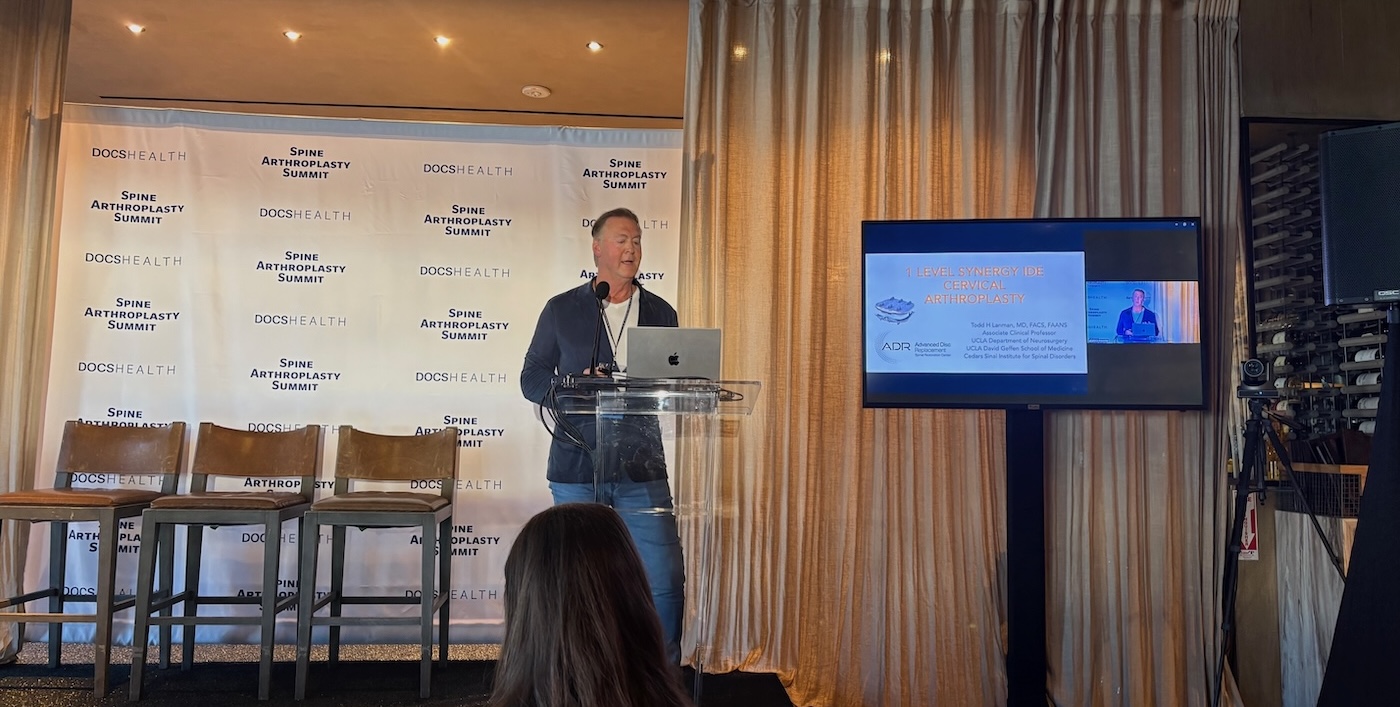
Interest in augmented reality and virtual reality has grown significantly over the past decade, stemming from a desire to limit complications associated with instrumented spine surgery and improving procedural efficiency.
Here, seven surgeons discuss the benefits and future applications of AR and VR technologies in spine.
Ask Spine Surgeons is a weekly series of questions posed to spine surgeons around the country about clinical, business and policy issues affecting spine care. We invite all spine surgeon and specialist responses.
Next week’s question: What are your tips for building a strong multidisciplinary spine team?
Please send responses to Alan Condon at acondon@beckershealthcare.com by 5 p.m. CST Wednesday, March 10.
Note: The following responses were lightly edited for style and clarity.
Question: How far can AR/VR technologies go in spine?
Frank Phillips, MD. Midwest Orthopaedics at Rush: AR continues to gain traction in many areas of medicine and more recently in spinal surgery. Initial AR spinal technologies have focused on placing pedicle screws accurately and efficiently, which represents the “low-hanging fruit.” As AR technologies evolve, these will guide the placing of interbody cages and facilitate precision neural compression.
Given the significant capital expenses associated with spinal robotics making them largely cost-prohibitive in ASCs, the far more manageable cost of the AR system I am currently using makes it ideal for ASC fusion procedures. As AR evolves, it could play an increasing role in surgical planning and providing virtual guidance intraoperatively as to how our surgical execution (for example, deformity correction) is matching preoperative goals.
John Hicks, MD. EmergeOrtho (Asheville, N.C.): The current state of the art is excellent 3D imaging, navigation and even robotic guidance for placement of instrumentation. Advances over the past 15 years have resulted in accurate, reproducible guidance. The ability for computer-assisted navigation and augmented reality (which Stealth and other stereotaxis systems essentially offer) to incorporate MRI and myelogram imaging will cross the threshold into navigation of decompression procedures and facilitate computer-assisted neural element decompression.
Even though implants can be placed accurately, current robot-assisted minimally invasive procedures place an increased demand on surgeons to perform technically challenging neural element decompression, interbody delivery and bone graft application — essentially the core of the operation that the instrumentation supports. I believe current navigation and robot-assisted surgical platforms are the foundation for a more complete precision robot-assisted spinal surgical solution.
Richard Chua, MD. Northwest NeuroSpecialists (Tucson, Ariz.): This is truly very exciting stuff, but it is certainly still in its infancy. As with many of our other enabling technologies, AR/VR will find a place and penetrance. It may initially be best for training surgeons, but as high tech gets more and more integrated with artificial intelligence, machine learning and data analytics, AR/VR may become the new image guidance or robotic-assisted technology to gain popularity.
Brian Gantwerker, MD. Craniospinal Center of Los Angeles: We are just seeing where AR and VR can take us. At this point in the evolution of spine surgery, it’s going to be something that surgeons will start to look to and demand for safety and accuracy. I see these technological advances bringing many patients very safe and accurate care, and fewer reoperations. The technology is already here, but widespread adoption is still waiting to become mainstream.
I am not sure your average community surgeon can yet get access to this technology, but I do see it becoming a more competitive space as well. You will see larger players become involved as the major implant manufacturers acquire companies and spec out new tech systems and drive innovation quicker.
There was a recent study in [the Journal of the American Medical Association] that showed immersive VR was safer in training younger surgeons and was less costly. This shows that VR — and likely AR — has a good safety profile, is more cost effective and has a role in education and likely surgeon proficiency. We will have to see what larger studies show in other disciplines.
Alok Sharan, MD. NJ Spine and Wellness (East Brunswick, N.J.): AR/VR can have tremendous potential in spine surgery. As a training tool, both for new graduates as well as surgeons that want to improve their skills, these technologies can be very useful. We are hoping to use some of these technologies internationally to help train surgeons interested in the awake spinal fusion techniques that will not be able to come overseas to visit. Some AR technologies are in their infancy right now, but as the fidelity improves I can see AR technology replacing some of the current navigation tools we are currently using.
Todd Lanman, MD. Lanman Spinal Neurosurgery (Beverly Hills, Calif.): AR in the spine is currently in use in a very limited way. There are no AR systems yet available for motion-preservation surgery in the spine. They’ve been developed primarily for spinal fusion. I have been meeting with some of the companies developing AR systems. We are trying to expand the focus and capabilities of AR systems to include disc replacement technologies, enabling the surgeon to place each disc in the perfect position without the use of excessive X-rays during surgery. AR systems will rapidly develop to become commonplace in the near future. With VR, it has more teaching applications than clinical applications at this time, and is currently being used in a number of medical schools.
Vladimir Sinkov, MD. Sinkov Spine Center (Las Vegas): This is definitely an exciting and interesting time to be a spine surgeon. I already get to use advanced robotic technology to perform minimally invasive cases. Other innovations are coming out at an ever-increasing rate. AR/VR in spine surgery can be very helpful to accomplish minimally invasive cases with more safety and accuracy. The ergonomics of only looking at the surgical field instead of constantly looking up at a screen for navigation can make cases more efficient with less physical strain for the surgeon.
AR/VR would be even more helpful if it would allow us to see soft tissue anatomy derived from the preoperative MRI as well as bony anatomy. Achieving navigation accuracy for soft tissue structures will definitely be challenging. It will take a lot of engineering and computer programming work to make this technology useful and efficient, but it is only a matter of time at this point.
Ready to reclaim your life? Get in touch with Dr. Lanman Today.
FOLLOW US ON SOCIAL MEDIA | @ADRSPINE




